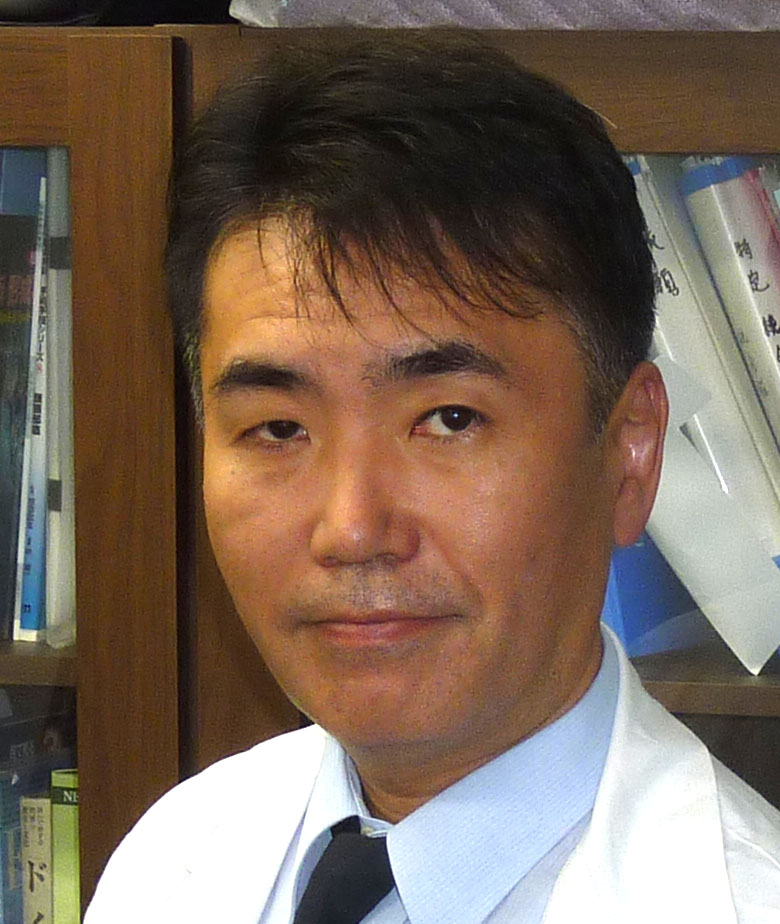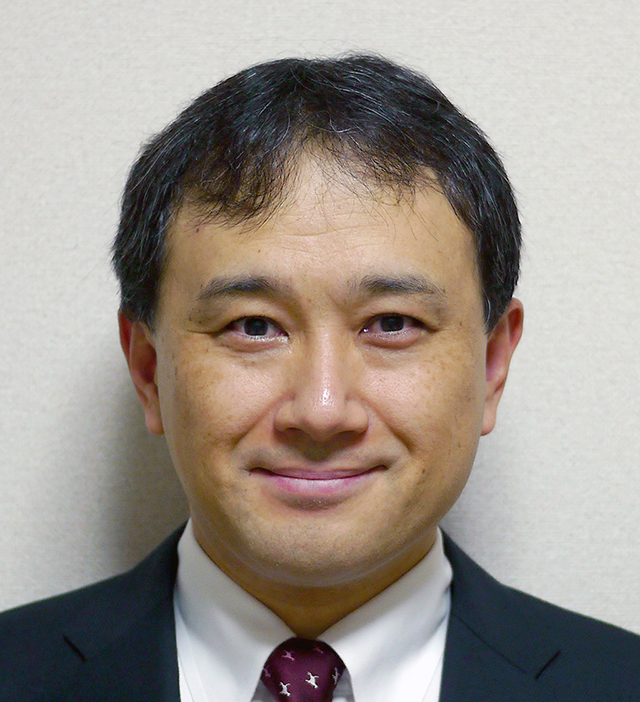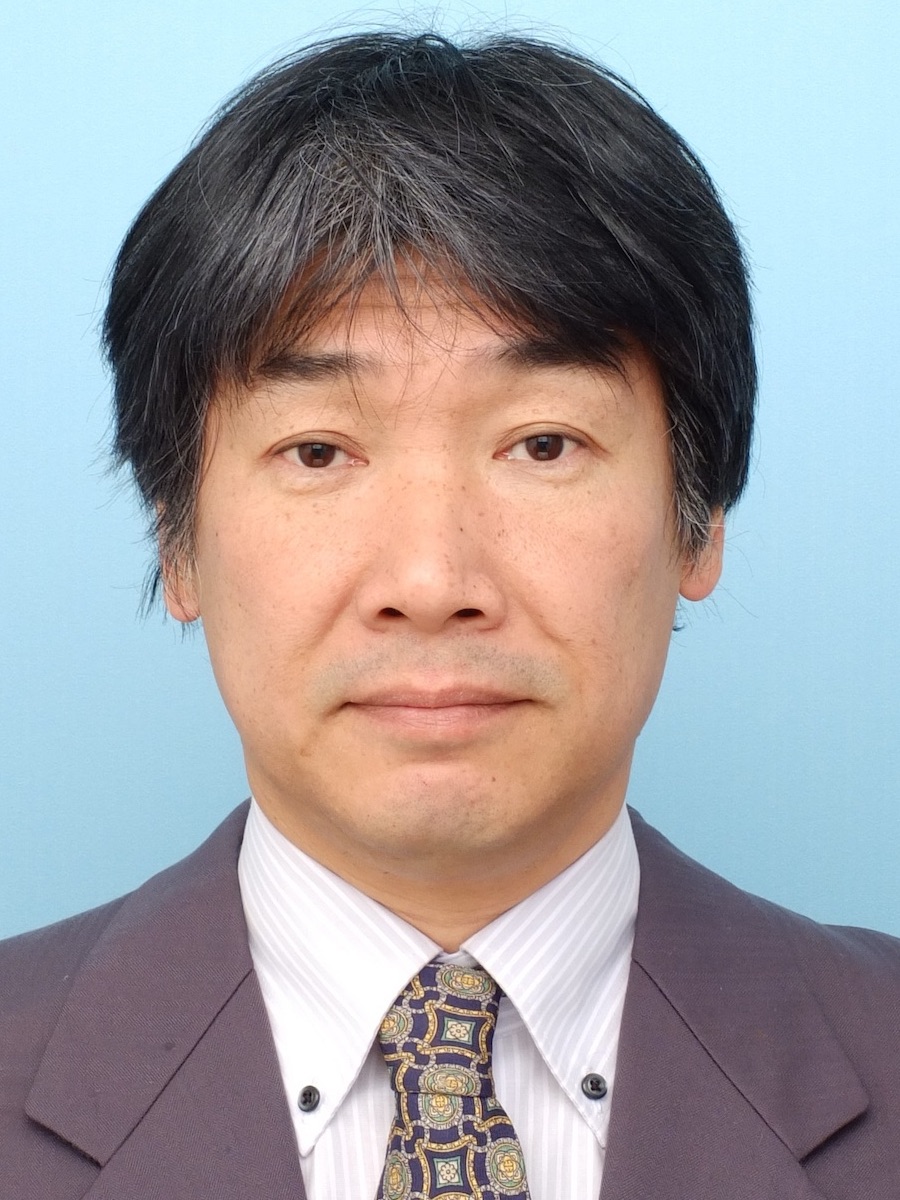Research Project A03 (1st period)
A03-1 Interpretation of Functional Dynamics by Hybrid Imaging Technique and Real-time Data Processing
Research Outline
Electrocorticogram (ECoG) with subdural electrodes is more sensitive to both radial and tangential dipoles since electrodes are directly placed on the brain surface. In order to capture functional dynamics of neurophysiologcal phenomenon, we investigate electrophysiological characteristics of ECoG related to different motor tasks for brain signal decoding and BCI development.
Member

Kyosuke KAMADA
| Principal Investigator | Kyousuke Kamada | (Department Head/Professor, Asahikawa Medical University) |
|---|
A03-2 Research for visualizing neural representation of the wrist movement using electroencephalography
Research Outline
This research project aims to visualize neural signaling and muscle synergies during hand or foot movements, using non-invasive brain activity signal recording methods. The visualizing technique could establish effective rehabilitation programs by visualizing transformation of neural signaling and muscle synergy organization by short and long-term motor learning.
Members

Natsue YOSHIMURA
| Principal Investigator | Natsue Yoshimura | (Associate Professor, Tokyo Institute of Technology) |
|---|---|---|
| Co-Investigator | Hiroyuki Kambara | (Assistant Professor, Tokyo Institute of Technology) |
| Co-Investigator | Yosuke Ogata | (Assistant Professor, Tokyo Institute of Technology) |
A03-3 Alterations and control of body representation in the basal ganglia circuit after chronic dopamine loss
Research Outline
The aims of this research group are to determine temporal and spatial distributions of the exaggerated beta oscillations and to examine the causality between the exaggerated beta oscillations and movement difficulties by using rat model of Parkinson’s disease.
Members

Koichi NAKAMURA
| Principal Investigator | Kouichi C. Nakamura | (Assistant Professor, Kyoto University) |
|---|---|---|
| Co-Investigator | Hiroyuki Hioki | (Assistant Professor, Kyoto University) |
| Co-Investigator | Takuma Tanaka | (Assistant Professor, Tokyo Institute of Technology) |
A03-4 Neural basis of human body representation: a direct electrocorticographic recording and stimulation study
Research Outline
In order to elucidate the neural mechanisms of the body representation in the brain and the mechanism of the short and long-term changes in this representation, we first need to understand the underlying physiological neural mechanisms of the body representation in the brain with regards to somatognosia and motor control. In the research group A03-4, our objective is to map the fronto-parietal network related with the body representation, probe the neural biomarkers, and clarify the fast dynamics by means of invasive presurgical evaluation with direct neural recording from electrocorticogram (ECoG) and interventions by electrical stimulation. In close collaboration with members in A01-1&A02-1, we also aim at delineating neural basis of corporeal awareness and sense of agency and its fast and slow dynamics by using the similar methods and lesion studies. We hope to apply these findings to presurgical evaluation of functional neurosurgery and rehabilitation interventions.
Members

Riki MATSUMOTO
| Principal Investigator | Riki Matsumoto | (Associate Professor, Kyoto University) |
|---|---|---|
| Co-Investigator | Akio Ikeda | (Professor, Kyoto University) |
| Co-Investigator | Takeharu Kunieda | (Lecturer, Kyoto University) |
| Co-Investigator | Masao Matsuhashi | (Associate Professor, Kyoto University) |
| Co-Investigator | Akihiro Shimotake | (Assistant Professor, Kyoto University) |
| Co-Investigator | Moritoo Inouchi | (Assistant Professor, Kyoto University) |
A03-5 Visualization and manipulation of pathway-specific brain plasticity on the body representation following the sensory nerve injury
Research Outline
Our group uses anatomical and physiological techniques to study the neuronal circuit mechanism underlies the
somatotopic reorganization after the nerve injury. Especially, the aim of this project is to visualize and/ or stimulate the specific neural circuit which appears injured-induced remodeling underlie somatotopic reorganization. We hope these findings will help us to understand neuropathic pain that is currently difficult to treat in human.
Members

Mariko MIYATA
| Principal Investigator | Mariko Miyata | (Professor, Tokyo Women’s Medical University) |
|---|---|---|
| Co-Investigator | Hironobu Osaki | (Assistant Professor, Tokyo Women’s Medical University) |
| Co-Investigator | Yoshifumi Ueta | (Assistant Professor, Tokyo Women’s Medical University) |
| Co-Investigator | Goichi Miyoshi | (Assistant Professor, Tokyo Women’s Medical University) |
A03-6 Body and Space in the animal model of spatial neglect
Research Outline
To understand the neural mechanisms of a certain neurological disease, it is indispensable to establish an animal model of the disease. However, the animal model of spatial neglect is not yet established. Recent studies on homology between human and non-human primates revealed that macaque monkeys also have the dorsal and ventral network for attention. The aim of the group is 1) to establish an animal model of spatial neglect by making a lesion in monkeys, to brain regions which is thought to be homologous to the dorsal and ventral pathway for attention and by evaluating behavior of the monkeys, 2) to investigate how the animal model of spatial neglect process information of retinal- and head-centered coordinates, by measuring gaze and head movement and 3) to understand the brain mechanisms of the deficits and recovery using functional brain imaging.
Members

Masatoshi YOSHIDA
| Principal Investigator | Masatoshi Yoshida | (Assistant Professor, National Institute for Physiological Sciences) |
|---|---|---|
| Co-Investigator | Masaki Fukunaga | (Associate Professor, National Institute for Physiological Sciences) |
A03-7 Body representation changes in macaque brain during motor recovery after internal capsular stroke
Research Outline
The aim of the present study is to investigate the brain regions of the macaque monkey, which are involved in functional compensation during the recovery of precision grip after lesioning the digit area in M1. In addition, to identify the cortical areas and pathways where neuritic or synaptic remodeling occurs during recovery after a lesion of M1, we focused on temporal changes in the gene expression of growth-associated protein-43 (GAP-43), the expression of which has been shown to be related to axonal sprouting and structural alteration of synapses. Moreover, we made a new brain damage model using macaque monkeys, in which a focal stroke was induced in the internal capsule, an area susceptible in human stroke patients.
Members

Yumi MURATA
| Principal Investigator | Yumi Murata | (Researcher, AIST) |
|---|---|---|
| Co-Investigator | Tomoyuki Ueno | (Lecturer, University of Tsukuba) |
| Co-Investigator | Tatsuya Yamamoto | (Assistant Professor, Tsukuba International University) |
| Co-Investigator | Takuya Hayashi | (Unit Leader, RIKEN) |
| Co-Investigator | Noriyuki Higo | (Chief Scientist, AIST) |

